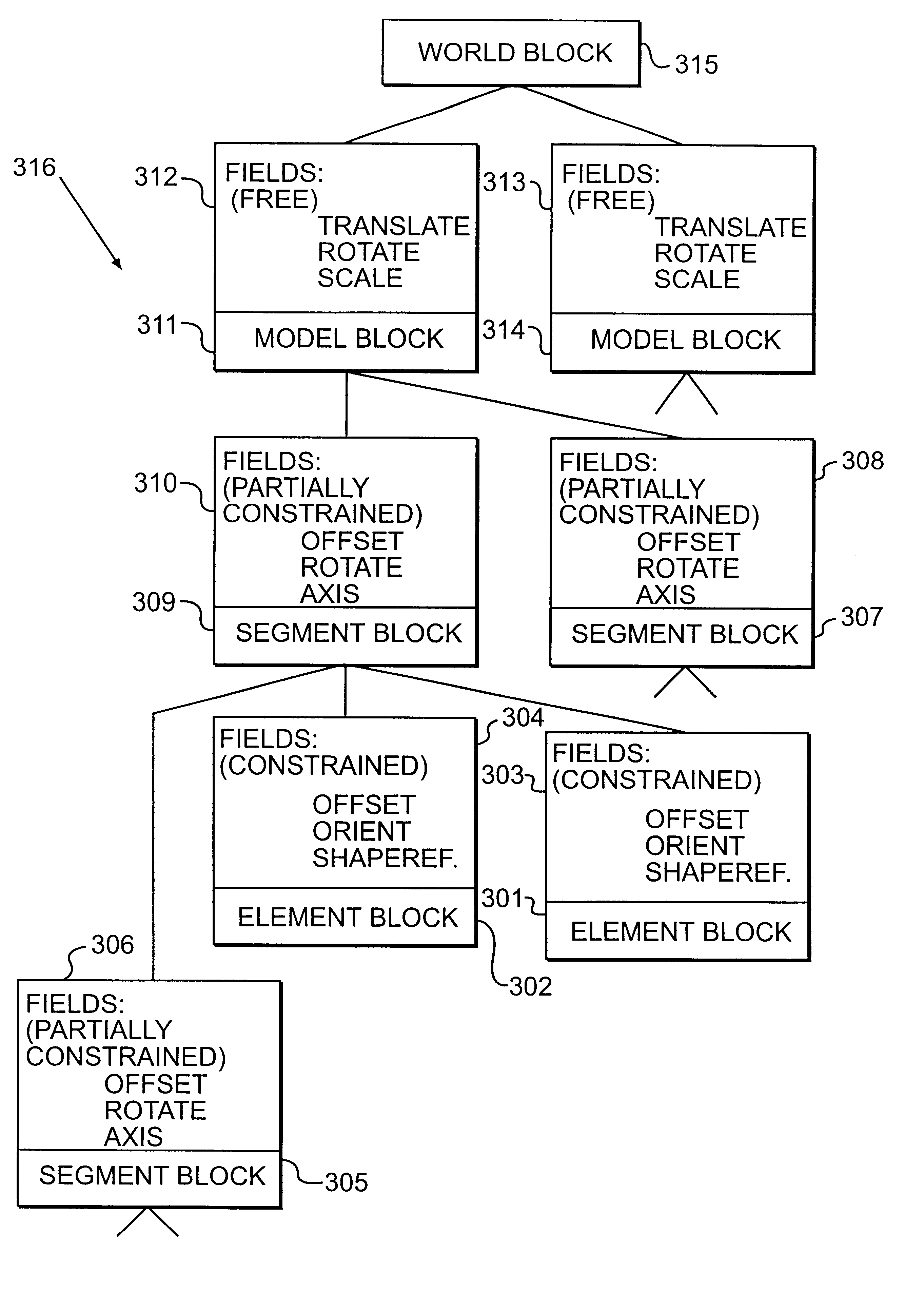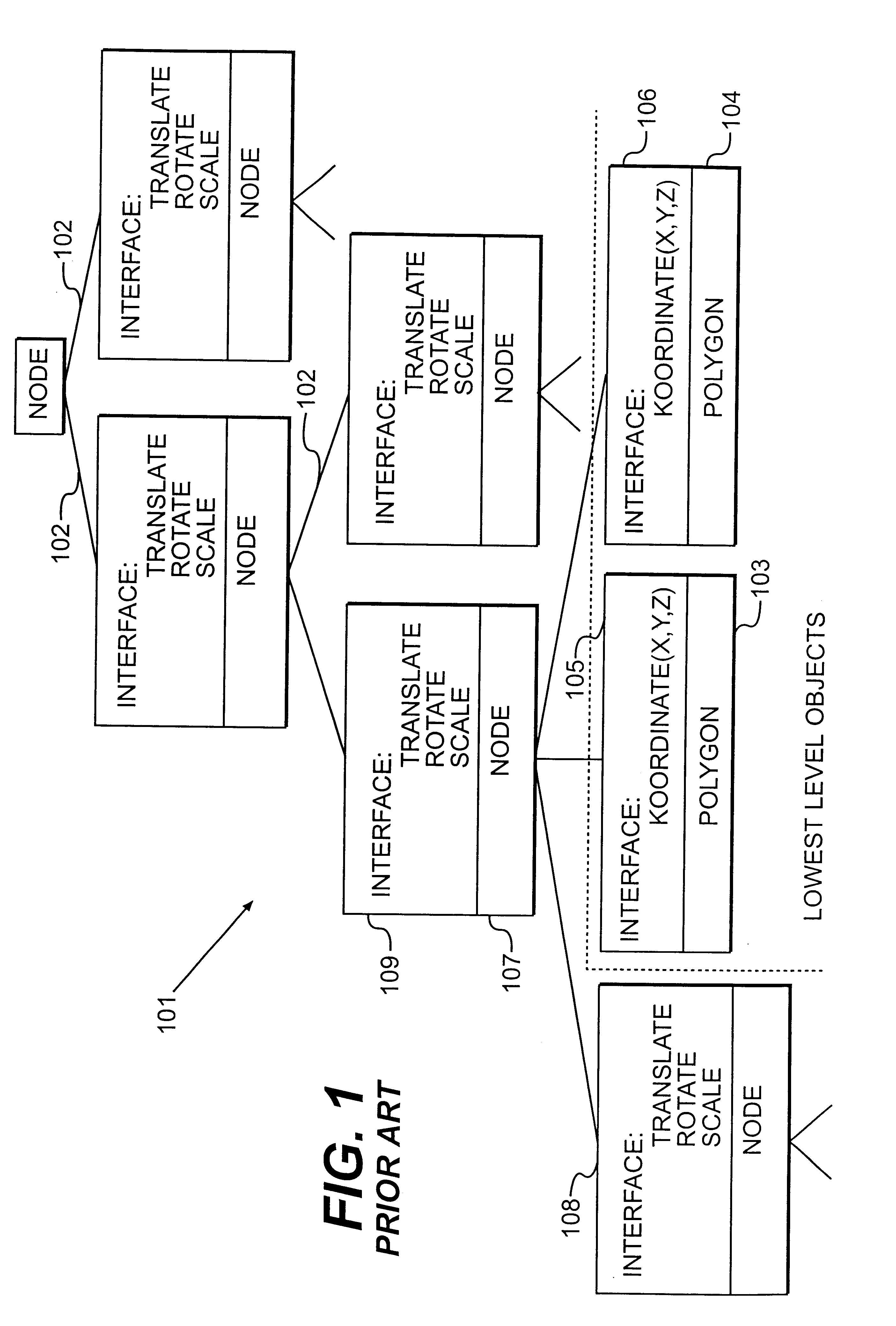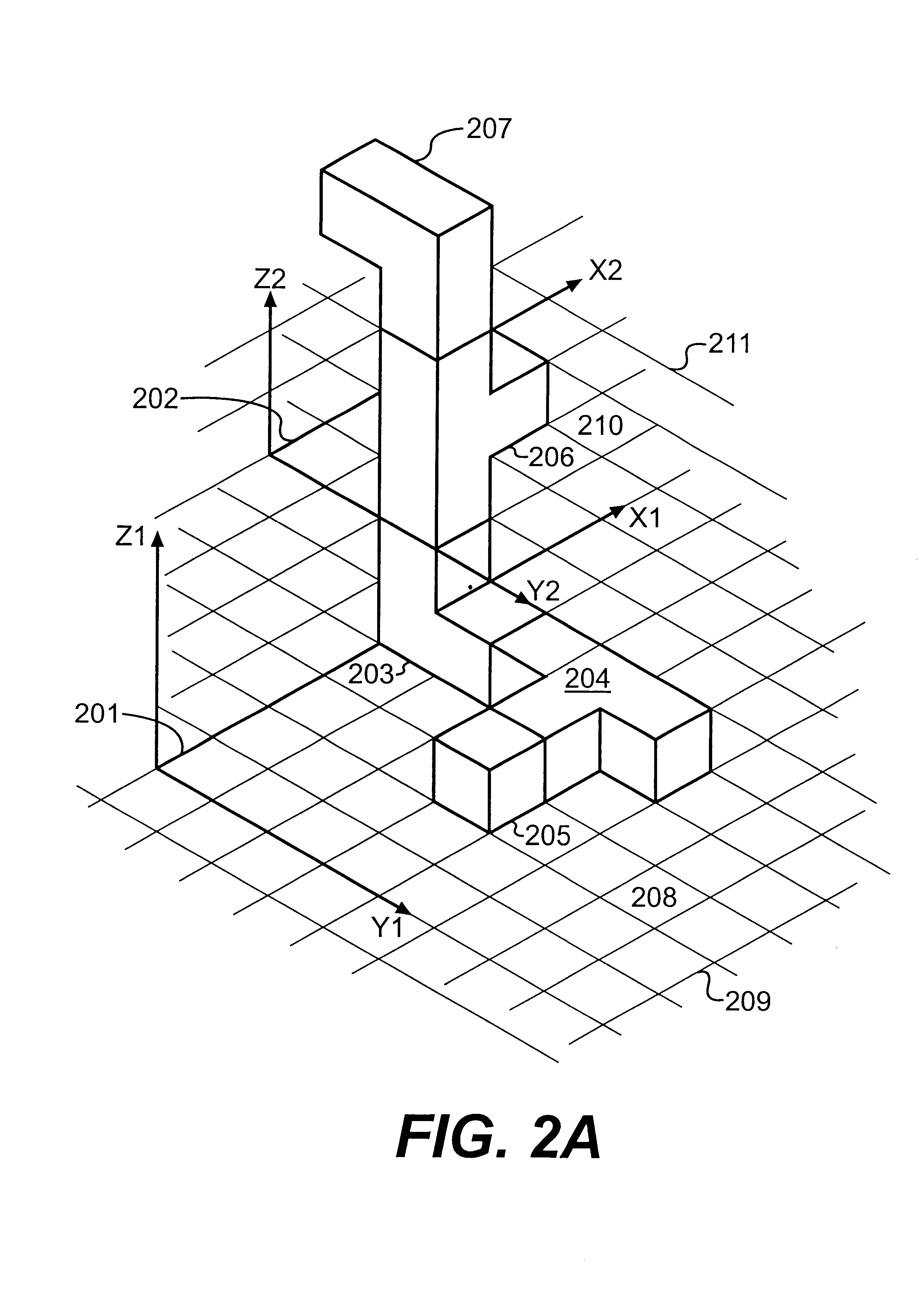Virtual reality modelling
a virtual reality and modeling technology, applied in the field of virtual reality modelling, can solve the problems of not achieving the efficiency of storage capacity relative to the complexity of the model, unable to move, rotate, or otherwise manipulate a part of the model relative to the model,
- Summary
- Abstract
- Description
- Claims
- Application Information
AI Technical Summary
Benefits of technology
Problems solved by technology
Method used
Image
Examples
Embodiment Construction
FIG. 1 shows the hierarchical structure of a model of a geometrical object, according to a prior art virtual reality modelling language. Such a virtual reality modelling language is known to a person skilled in the art as VRML. The basic elements of VRML is two-dimensional non-concave polygons defined by their co-ordinates in a three-dimensional rectangular system of co-ordinates. If the axes of a three-dimensional rectangular system of co-ordinates are denoted the x-axis, y-axis, and z-axis, respectively, a two-dimensional convex polygon which may be a rectangle is defined by the co-ordinates of the four corners of the rectangle. That is four sets of (x, y, z) co-ordinates. Due to the polygon oriented structure of VRML, a designer designing a virtual reality model of a fictive or existing real world object must divide the object into polygons. A precise and fine VRML model of an object having a curved and smooth surface must thus be compounded of a huge number of polygons in order ...
PUM
 Login to View More
Login to View More Abstract
Description
Claims
Application Information
 Login to View More
Login to View More - R&D
- Intellectual Property
- Life Sciences
- Materials
- Tech Scout
- Unparalleled Data Quality
- Higher Quality Content
- 60% Fewer Hallucinations
Browse by: Latest US Patents, China's latest patents, Technical Efficacy Thesaurus, Application Domain, Technology Topic, Popular Technical Reports.
© 2025 PatSnap. All rights reserved.Legal|Privacy policy|Modern Slavery Act Transparency Statement|Sitemap|About US| Contact US: help@patsnap.com



